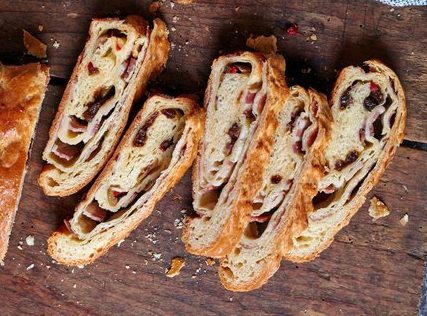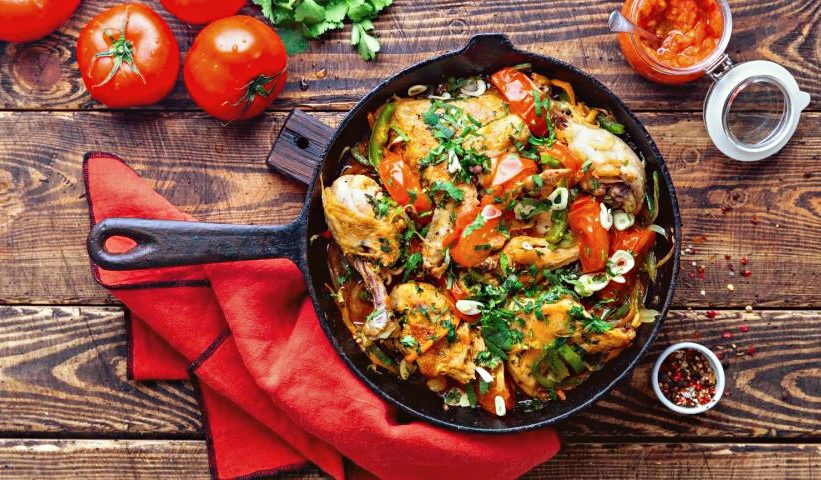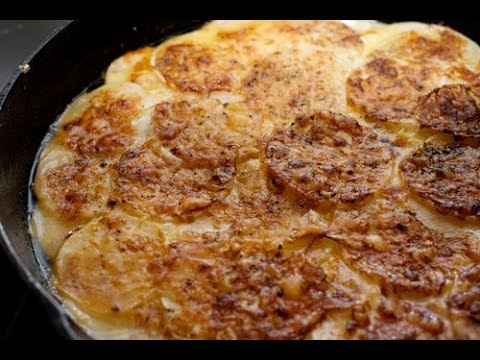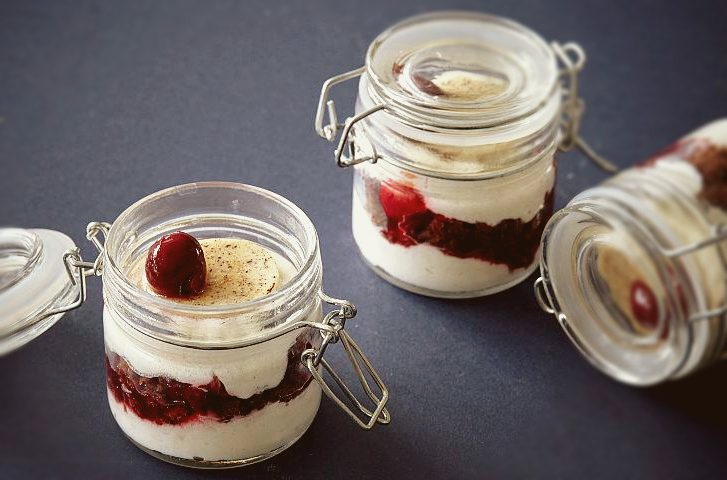Martha Beltran from Austin, Tex. brings us this recipe for a traditional Venezuelan Christmas bread. She brought the recipe with her on her move to the US, and considers it an essential part of her family’s Thanksgiving. Ms. Beltran always start the bread the day before serving, making sure to laminate with butter 3 times before rolling in bam, ham, olives and pimentos. Although the process can be long, the dough is forgiving and can be left in the fridge even overnight. Upon slicing the finished loaves, each slice reveals its festive butter slicked swirl.
Ingredients
For the bread:
- 1 cup or 250 millilitres milk (whole)
- ¼ cup or 50 grams plus 2 tablespoons sugar (granulated)
- ½ ounce/14 grams/4 1/2 teaspoons instant yeast
- 1 pound or 454 grams salted butter (approx.. 4 sticks, at room temperature).
- ½ teaspoon salt
- 7 eggs
- 4 ½cups or 509 grams flour (self-rising)
- 3 ⅓cups or 483 grams flour (all-purpose), and additional to dust surface while preparing
For the filling:
- ½ pound or 226 grams ham, sliced thinly and cut into long strips 1/2 inch wide
- 18 ounces or 509 grams smoked uncured bacon, slice into long 1/2-inch-wide strips (avoid thick cut bacon)
- 2 cups or 288 grams raisins
- ½ cup or 85 grams pimento-stuffed green olives (slice thinly)
For the glaze:
- ¼cup or 59 milliliters milk (whole)
- 1 tablespoon sugar
Nutritional Information
-
-
-
- Nutritional analysis per serving (12 servings)
- Nutritional analysis per serving (12 servings)
941 calories; 54 grams fat; 27 grams saturated fat; 1 gram trans fat; 18 grams monounsaturated fat; 5 grams polyunsaturated fat; 92 grams carbohydrates; 3 grams dietary fiber; 23 grams sugars; 22 grams protein; 215 milligrams cholesterol; 1407 milligrams sodium
-
-
Note:
The information shown is estimate based on available ingredients and preparation. This should not be considered as a replacement for a professional nutritionist’s advice.
Preparation
- Making the bread: Scald milk in a small pot over low-medium hot. When near boiling (bubbles form around edge of pot), remove from heat and allow to cool.
- Combine ½ warm water & 2 tbsp sugar in a small bowl – mix well. Add the yeast and allot to rest for roughly 5 minutes (until bubbly).
- Using a stand mixer with whisk, whisk the 3/4 cup (1 1/2 sticks) butter, remaining sugar, and the salt on low-medium speed to simply combine. While still running, add the eggs, the cooled milk, and the yeast mixture. Mix on medium until well combine (approx. 2 min)
- Place the flours in a medium bowl and whisk. Replace whisk attachment in stand mixer to dough hook, and carefully add flours to the butter mixture – ½ cup at a time until completely incorporated. Dough should ultimately pull cleanly away from bowl’s edges. Allow to rest for 5 minutes.
- Dust clean work surface with all-purpose flour. Scrape the dough out of the bowl and knead for approx.. 5 minutes. If too sticky to handle, add a little flour but be careful not to dry the dough out. Cut into 2 pieces.
- Roll each piece of dough, with a hefty rolling pin, into a 15in by 20in rectangle, roughly ¼in thick. Using a butter knife or offset spatula, spread ~3tbsp butter over the top of the dough in a thin layer, just sufficient to cover.
- Fold the dough into thirds, as you would a letter: With the short end of the dough facing you, fold up from bottom, and then down from the top. Next, take the letter-shaped dough and wrap one last time, lengthwise, to make a small square.
- Place each piece in a plastic bag or wrap individually in plastic, and allow to rest in refrigerator for roughly 4 hours. Repeat the rolling, buttering, folding, refrigerating 2 additional times with both pieces of dough. This should take roughly 12 hours total, but extra chilling time between the rollings is okay, which allows for this process to be split overnight. (Example, first rolling night before, remaining rollings the next day.)
- Once complete, remove dough from refrigerator. Divide each piece into 2 equal portions, making 4 pieces of dough in total. Lightly sprinkle flour on your clean work surface, and roll one piece into a 15 by 20in thin rectangle, making sure to rewrap (in plastic) and return the other pieces to the refridgerator.
- Filling the bread: Working lengthwise, place a stripe of ham in a single layer. Below that add a stripe of bacon strips, and below that a light stripe of raisins and olives (Use a light hand with these two components!). Repeat pattern until the entire surface of the dough is covered.
- Taking one of the short edges of the dough, carefully roll it up like a jelly roll, making sure to tuck it in as you go to ensure it’s tight. When fully rolled, tuck the open sides underneath the roll, and place the roll seam down on a parchment/baking-paper lined baking sheet to make sure it doesn’t pop open during baking. Repeat this rolling & filling process with the remaining 3 pieces of dough. Arrange loaves on 2 baking sheets (parchment/baking-paper lined), 2 per sheet. Cover the loaves with a clean dish towel & allow to rise for 45 minutes.
- Heat the oven to 350 degrees. Bake the loaves 2 at a time for approximately 40 minutes. Make sure to check the tops are becoming golden, yet not burning. If browning too quickly, you can tint with foil to prevent burning.
- Preparing the glaze: While the bread bakes away, add sugar & milk to a small bowl, and stir until dissolved.
- At the 40 minutes mark, remove the loaves from the oven, and use a pastry brush to glaze their tops. Bake for an additional 5 minutes, until they form a slight sheen & have a rich, deep golden brown color. Pull out of oven and let the bread rest for roughly 10 minutes before slicing and serving.




